Apple Valley, Minn. — Uponor North America (Uponor), a pioneer and leading provider of PEX (crosslinked polyethylene) piping products, launched its new Complete Polymer Solution for commercial-piping applications in the U.S. The innovative platform for this important announcement is a special, 90-minute, virtual event for customers, specifiers, installers, and other buying influencers in the commercial Read more
Uponor
Apple Valley, Minn. — Uponor North America (Uponor), a pioneer and leading provider of PEX (crosslinked polyethylene) piping products, launched its new Complete Polymer Solution for commercial-piping applications in the U.S. The innovative platform for this important announcement is a special, 90-minute, virtual event for customers, specifiers, installers, and other buying influencers in the commercial plumbing and mechanical field.
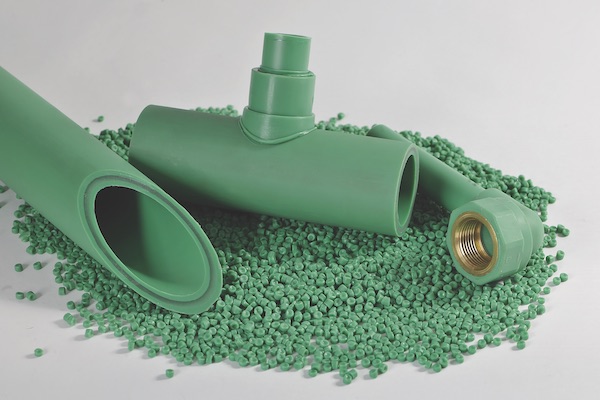
The online unveiling included the official launch of two important initiatives: Uponor’s new PP-RCT mechanical piping system for commercial HVAC projects; and the new Uponor Construction Services, offering enhanced, professional estimation, design, and building information modeling (BIM) services to support the design and installation of plumbing and mechanical piping systems.
“Our new PP-RCT and Construction Services offerings, combined with our traditional PEX piping solutions, deliver a complete polymer solution for a wide range of commercial plumbing and mechanical projects,” says Bill Gray, president of Uponor North America. “From half-inch diameter PEX to 12-inch diameter PP-RCT, our piping solutions meet the performance, durability, and safety needs of the entire commercial structure. In addition to these industry-leading piping products, Uponor Construction Services can provide the systems design and engineering expertise to ensure a project is fully supported from kickoff to post-construction.”

Empire Pass Condos, Park City, Utah, AquaPEX and PP-RCT install 2019, Thermal Engineering, PNA
PP-RCT piping system: Uponor PP-RCT (PolyPropylene, Random copolymer with modified Crystallinity and Temperature resistance) has higher temperature and pressure ratings than PP-R pipe, as well as lower levels of expansion and contraction.
Proven reliable for commercial hydronic heating, chilled-water cooling, and distribution piping for radiant heating and cooling applications — including snow melt, turf conditioning, and permafrost prevention — PP-RCT is 80 percent lighter than steel pipe. That makes it not only easier, but also safer, to install than metallic pipe systems. It also offers higher resistance to corrosion, rust, and scale buildup and quieter operation than metallic piping materials.
 In addition, contractors will be able to bid projects with more certainty and confidence, as polymer piping offers stable pricing that doesn’t fluctuate with market changes unlike alternative piping materials.
In addition, contractors will be able to bid projects with more certainty and confidence, as polymer piping offers stable pricing that doesn’t fluctuate with market changes unlike alternative piping materials.
Uponor initially announced its entry into the North American PP-RCT market in September 2019 through a partnership agreement with Pestan North America. As a result, Uponor is now marketing approximately 270 pipe and fitting products in the U.S. in sizes up to 12 inches in diameter and with plans to expand up to 24 inches. All Uponor PP-RCT pipe and fittings come protected by a 10-year warranty.
“With this new piping system, we are also offering comprehensive training and expert technical support — both online and through our nationwide network of in-person sales professionals — to help contractors learn our PP-RCT system,” says Gray. “This includes making pipe connections with special heat-fusion equipment, via our partnership with McElroy Manufacturing, the leading manufacturer of fusion equipment.”
Gray went on to say that whether their customers select virtual or hands-on training, Uponor’s professional guidance helps installers master best practices for both PP-RCT and PEX, helping to keep their projects on schedule and within budget.
Construction Services: Continuing its 27-year history of offering PEX piping system design for both residential and commercial radiant heating, cooling, and plumbing, residential fire safety, and commercial hydronic piping, Uponor has expanded this offering to become Uponor Construction Services, featuring regionally based designers, as well as a team of BIM experts.
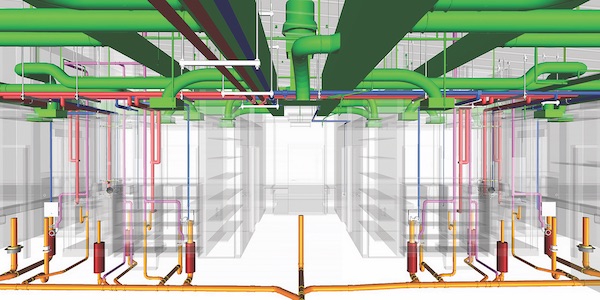 Using the latest design and estimating tools, the Uponor team of skilled and experienced designers and project managers offers a deep menu of design and construction services at no charge, including:
Using the latest design and estimating tools, the Uponor team of skilled and experienced designers and project managers offers a deep menu of design and construction services at no charge, including:
- Square-foot budget estimations
- Material take-offs
- Piping material cost comparisons
- Design development
- Radiant heating and cooling loop layouts
- Pipe sizing and load recommendations
In addition, Uponor Construction Services provides fee-based, system design services (plansets in PDF, Revit®, and fabrication models), quoted to meet the particular needs of individual projects, at prices below standard industry system-design rates.
Other fee-based services from the BIM Services team include:
- Record modeling
- Estimating
- As-built modeling
- On-site support
- Project controls
- Modular construction
- Kitting and prefabrication
- BIM content
All of these services integrate directly into the user’s software platform and workflows, providing an integrated partnership with an end goal to deliver a well-designed project that is properly coordinated and fully supported.
“Evolving our Construction Services offering was in response to customer feedback and their growing expectations related to project efficiency, accuracy, quality, and consistency to better meet schedules and budgets,” says Gray. “We saw an opportunity to become a more involved partner from the very start of a project through construction onto completion and beyond. With this project-spanning partnership, we are confident we can help improve customers’ productivity and profitability.”
Since the evolution of Uponor Construction Services and the PP-RCT partnership announcement with Pestan in 2019, Uponor has provided PP-RCT piping systems and design expertise for several commercial projects in the U.S. The largest and most notable of these is a recently completed hybrid snow-melt system, involving both 1,900 feet of Uponor PP-RCT and 36,000 feet of Wirsbo hePEX™ pipe, for a 305-foot pedestrian bridge on the Utah Valley University campus in Orem, the largest public university in the state.

The Plastics Pipe Institute, Inc. (PPI) is celebrating its 70th year. Formed in 1950 as the Thermoplastic Pipe Division of the Society of the Plastics Industry (SPI), PPI is now the leading North American trade association representing all segments of the plastic pipe industry, and is known for its research, its work to develop industry Read more
The Plastics Pipe Institute, Inc. (PPI) is celebrating its 70th year. Formed in 1950 as the Thermoplastic Pipe Division of the Society of the Plastics Industry (SPI), PPI is now the leading North American trade association representing all segments of the plastic pipe industry, and is known for its research, its work to develop industry standards and codes, advocacy and education.
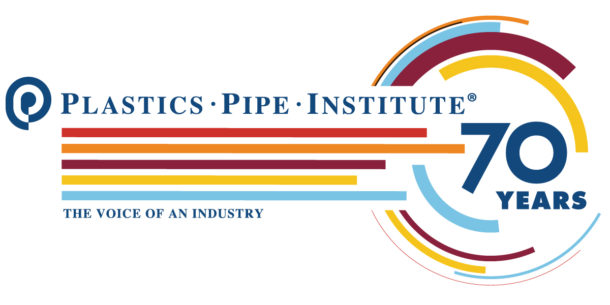
“Since the very beginning, PPI has provided the vision and the leadership that has produced the establishment of uniform test and design criteria that became the foundation for all current applications of plastics piping,” stated PPI President David Fink.

PPI President David Fink
“PPI created the methodology for rating the long-term strength of pipe materials plus the concepts of pipe pressure rating, the establishment of standard dimensional ratios and the adoption of numbers to state those properties. Our association staff and members also engineered the first code acceptances for plumbing, industrial, commercial and gas distribution applications for plastics piping, and provided the first industry-wide statistics. Today, that work continues and includes telecommunications conduit, corrugated drainage pipe, along with pipe used in potable water, forced main sanitary sewer systems and building and construction projects.”
In 1950, when the group was first formed as the Plastic Pipe Manufacturers Association, plastic pipe was still in its infancy, having been developed during World War II as a way to insulate radar cables. Solid-wall high-density polyethylene (HDPE) pipe began replacing metal pipe in oil- and gas-gathering systems in the late 1950s. In the early 1960s, gas utilities started replacing failing iron pipe with polyethylene (PE) pipe, and because of its successful performance history, 95 percent of all new gas distribution systems installed today use PE pipe. A few years later, corrugated HDPE pipe started to replace clay pipe in agricultural drainage systems. In the late 1980s, large-diameter corrugated HDPE pipe began to replace metal and concrete in storm water culverts. The material has continued to evolve into what is now its third and fourth generation of development, each with improved performance capabilities.
“PPI has always been ‘member-run, member-led,” Fink stated. “The continuing success and growth of our association is a direct result of the enthusiastic work by those members. One indication of how our members view their association can be determined by the many people who have participated for several decades.”

Jim Craig, PPI Lifetime Achievement Award Recipient
Frequently, PPI presents its Lifetime Achievement Award to a member who provided exceptional devotion and dedication to the industry. Jim Craig was honored in 2013 for his 40 years of service to the industry and said, “I am proud to be a lifetime member of PPI. It is a great organization with a super staff to help the members accomplish great gains in the plastic pipe markets. I joined PPI in the 1980s, while working for McElroy Manufacturing in Tulsa, OK. I quickly learned that this organization was great at getting people and organizations together to grow the PE industry in general. We had pipe manufacturers, resin manufacturers, fitting manufacturers, joining manufacturers and distribution organizations take on projects, do testing, and develop technical notes and reports with everyone working together to accomplish our goals.”
“Unfortunately, Jim passed away soon after providing his thoughts about PPI,” explained Fink. “His contributions and devotion to PPI and the industry is his legacy that will always benefit others.”

George Zagorski, PPI Lifetime Member
Another Lifetime Member, George Zagorski, now retired from Blue Diamond Industries (Lexington, KY), offered, “I was a somewhat “reluctant” young volunteer when Blue Diamond first joined PPI some 15 years ago. What I discovered was like-minded professionals, who would debate and cooperate for the betterment of the overall plastic piping industry. Along the way, my voice was always heard and considered. In the end, I’ve developed not only professional relationships, but lifelong friendships.” Zagorski also served on the PPI Board of Directors from 2011 to 2017 as vice chair, chair and past chair plus numerous other committees and task groups.
In 1963, Phillips Petroleum, the company that brought a new manufacturing process to the industry for making HDPE and discovered how to make polypropylene 1951, now another popular pipe resin, and in 1963 established its pipe division, Driscopipe, which is now known as Performance Pipe. Harvey Svetlik, another long-time PPI member who started his career with Phillips Driscopipe and recently retired from PPI-member company Georg Fischer Central Plastics LLC, said, “PPI is the leader in the polyolefin pipe industry specifically and in the plastic pipe industry generally. PPI is not so much about what it has accomplished in the past, as it is about our polyethylene brotherhood and our commitment to future accomplishment.
“We have watched the industry grow from using 80 million pounds in 1980 to almost a couple of billion pounds annually for all its applications and all its pipe types. The next 40 years will witness a doubling yet again, as polyethylene pipes and fittings take their place as a dominant leak-free system in the drinking water sector. The North American population will double in this timeframe, creating the demand, along with the need to replace half of existing water distribution pipes due to their deterioration. PPI has led and will lead the market in plastic pipe technology, standards, and associations.” Svetlik received his PPI Lifetime Membership in 2019.
In 1975 the Corrugated Polyethylene Tubing Association was created. Later known as the Corrugated Polyethylene Pipe Association it became the Drainage Division of PPI in 2019. It focuses on the use of corrugated pipe that can be found up to 60 inches in diameter for stormwater and gravity sewer systems. “The members of this division are some of the largest users in the United States of recycled plastic,” Fink said. “One company processes more than 550 million pounds of post-consumer recycled plastics for its pipe products. Keeping this large amount of material out of landfills is possible because of the growing demand for this type of pipe.”

PPI bestowed an Honorary Lifetime Membership to James Goddard, P.E.
In 2011, PPI bestowed an Honorary Lifetime Membership on Drainage Division member James Goddard, P.E. recognizing his more than 30 years of contributions and industry innovations. Goddard retired from Advanced Drainage Systems, Inc. (ADS) as the company’s Chief Engineer.
“Now with a uniform, consistent voice, PPI and specifically the Drainage Division, can go out to federal agencies such as the U. S. Department of Transportation, EPA, Army Corps of Engineers, and others plus state agencies, such as Departments of Transportation, as well as significant organizations such as AASHTO with a common voice technically and that has helped the industry to grow and prosper and has significantly benefited our nation.”
Fink and his organization foresee increased use for plastic pipe. “The trend to create more applications along with enhanced grades of resin and even new resins continues to accelerate at a rapid rate,” he stated. “And we fully expect this continue for the next 70 years. PPI’s first 70 years has been an exciting journey.”
Additional information can be found at www.plasticpipe.org.

In alignment with its strategic focus on enhancing customer experiences and differentiating through innovation, Uponor North America (Uponor) is pleased to announce the appointment of Brett Boyum to the position of Vice President of Marketing & Offerings and a member of the company’s Senior Management Committee. In this critical role, Boyum will focus on growing Read more
In alignment with its strategic focus on enhancing customer experiences and differentiating through innovation, Uponor North America (Uponor) is pleased to announce the appointment of Brett Boyum to the position of Vice President of Marketing & Offerings and a member of the company’s Senior Management Committee.
In this critical role, Boyum will focus on growing business by accelerating the innovation pipeline, managing the product portfolio, connecting the technical aspects of solutions to the needs of Uponor’s customers, and building stronger connections between company strategies and customer experiences.
“We believe Brett is a great fit for Uponor, as he will help move our company into the future,” said Bill Gray, President, Uponor North America. “Specifically, we were impressed with his range of expertise in creating differentiated solutions to solve customer challenges; a passion for developing strategic portfolio growth opportunities; and an ability to deliver award-winning digital and analog engagement marketing strategies.”
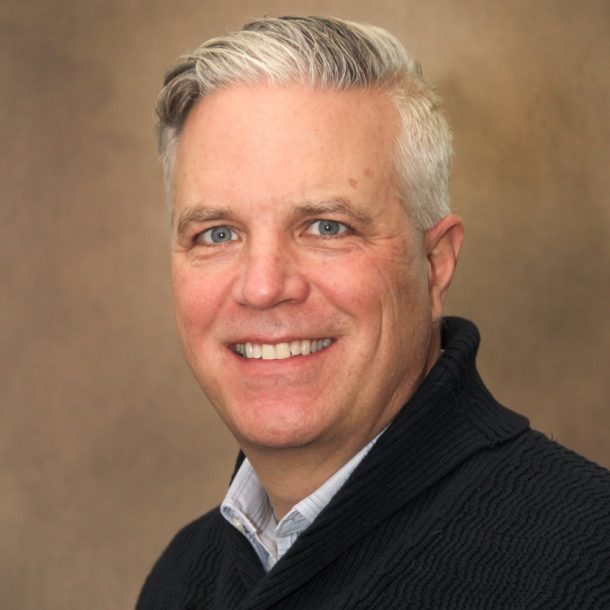
Boyum most recently served as Senior Vice President of Marketing for Eden Prairie, Minn.-based Cambria, a leading quartz brand in the surfaces industry. Previously, he worked more than 17 years at Marvin Windows in marketing roles of increasing responsibility, ultimately serving as Vice President, Brand Strategy and User Experience. He also owned a marketing consultancy and worked early in his career at both Recovery Engineering, Inc. (PUR brand) and Northern Hydraulics, Inc.
He earned an MBA from Walden University in Minneapolis, an undergraduate degree from the University of Minnesota, and completed marketing-focused executive development programs at both the University of Minnesota and Columbia Business School.
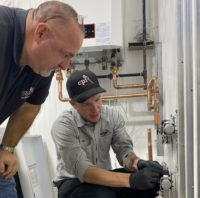
BY JOHN O’REILLY 35-year industry veteran discusses why his employer, CPI Plumbing & Heating, has chosen to invest heavily in developing the tech skills of local high school grads, working with various vendors and suppliers to create a 2,500-sq.-ft. learning facility from scratch. The headlines tell the story with increasing urgency: The shortage of skilled Read more
BY JOHN O’REILLY
35-year industry veteran discusses why his employer, CPI Plumbing & Heating, has chosen to invest heavily in developing the tech skills of local high school grads, working with various vendors and suppliers to create a 2,500-sq.-ft. learning facility from scratch.
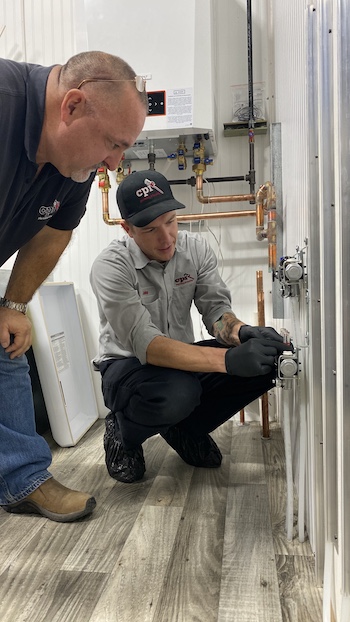 The headlines tell the story with increasing urgency: The shortage of skilled workers in the trades hampers our economy. Work takes longer to complete and costs more because of inevitable delays and fierce competition. This list of reasons why this shortage has reached critical mass is as long as your arm. What isn’t as clear is what to do to correct it.
The headlines tell the story with increasing urgency: The shortage of skilled workers in the trades hampers our economy. Work takes longer to complete and costs more because of inevitable delays and fierce competition. This list of reasons why this shortage has reached critical mass is as long as your arm. What isn’t as clear is what to do to correct it.
That is, unless you’re Steve Murray, a 35-year veteran of the PHCP industry and currently HVAC Division Manager at CPI Plumbing & Heating, a full-service contractor based in Mt. Vernon, Washington, a 60-mile drive north of Seattle on Interstate 5. For Murray and CPI owners Brad Tully and Michael (Oly) Olsen, developing a team of properly trained plumbing and HVAC service technicians is a task just as important as—if not prerequisite to—successfully managing the day-to-day operations of this fast-growing company.
The key to the company’s training effort lies in its recently completed “Training Lab” where young apprentices get to practice the skills taught in the company’s classroom. To outfit the 2,500-square-foot space with the plumbing, hydronic and forced-air HVAC systems the company installs and services, CPI went to the vendors that they rely on every day.
Among the most critical was Uponor North America, because its PEX-a piping and fittings offering are at the core of the company’s plumbing and heating disciplines. Uponor responded in a big way: donating nearly $5,000 of Wirsbo hePEX plus pipe for radiant and hydronic heating applications, as well as fittings, manifolds and controls. Also included was nearly 200 linear feet of Quik Trak plywood panels, used mainly for retrofitting a residential space with radiant heating.
“The CPI Training Lab has been a significant investment for us,” says Murray. “We spent $25,000 to $30,000 outfitting the space. Thanks to Uponor and our other vendor partners, we’ve been able to get much of the material donated. But it is a serious expense, for sure—yet one that we think will pay off, long term.”
In the following interview, Murray tells how CPI ensures it has access to a ready and reliably stable of service technicians, as well as how his background positioned him to lead this important initiative for CPI.
Question (Q): How did the idea for the training room develop?
Steve Murray: The closest training center to Mt. Vernon is 50 miles away, and it isn’t practical to ask guys who have already worked a full day to drive 90 minutes in rush-hour traffic to get to a training class. While there are a few local colleges with some HVAC classes, there is nothing in plumbing. Nor did the available curriculum offer any hands-on learning, which we believed essential.
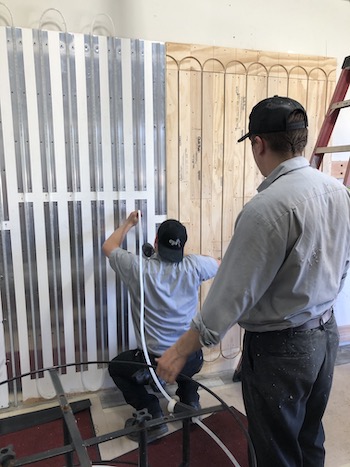 We started by expanding an existing classroom and outfitting it with all the newest audio/visual equipment for online learning. Next, in 2018, we began to transform a junk space every contractor’s shop has into a hands-on lab where apprentices could actually practice what was taught in the classroom. We can now accommodate up to 30 students at one time. Our top techs, Coady Pike and Jake Petterson, help with the training and the curriculum planning as well.
We started by expanding an existing classroom and outfitting it with all the newest audio/visual equipment for online learning. Next, in 2018, we began to transform a junk space every contractor’s shop has into a hands-on lab where apprentices could actually practice what was taught in the classroom. We can now accommodate up to 30 students at one time. Our top techs, Coady Pike and Jake Petterson, help with the training and the curriculum planning as well.
To create an authentic environment, we framed a floor above existing plumbing connections for waste and water connections. The renovated space now has full plumbing facilities: a working bathroom, urinal and kitchen. We also have all the mechanical systems our techs work on in a home: two combi-boilers, two furnaces and air handlers, an electric furnace and, with Uponor’s help, radiant heating on the wall. We also have all kinds of water heaters, tank and tankless.
Q: What is your background and how did you gravitate to training?
Murray: After high school, I joined the Coast Guard. The trade skill in that branch of the military is called “damage control.” On a ship, damage control involves everything from firefighting, to taking care of plumbing systems, to welding and carpentry. That’s where I learned how to maintain plumbing and hydronic systems.
After five years, I left the service and got a job working for a maintenance/property management company, maintaining large apartment buildings in the older part of Seattle. From there, I worked for various contractors, becoming a journeyman plumber and HVAC service technician. Eventually, I opened my own shop for a time.
The one constant at every company, including my own, was a need for trained personnel. Most applicants lacked the necessary skills; or, worse, they had really bad habits. So, I started devising in-house training programs.
At the same time, I taught the plumbing apprenticeship track at a local trade organization called the Construction Industry Training Council. Working two jobs and commuting two hours each way for work eventually became too much. So, in 2016, I joined CPI, which is just 10 minutes from my house.
The owners wanted to grow their HVAC business, and I took on the role of HVAC Division Manager. We’re still working to grow it, and it has been a challenge, mainly because we just don’t get a lot of already properly trained candidates. That’s really what it boils down to.
Q: Who are the students and how do you find them?
Murray: Most are high school grads who CPI has hired. The average age of our apprentice crew is 20, although the average apprentice nationwide is 27, so we’re significantly below that.
Recruitment isn’t easy. Our marketing person participates in all the Chamber of Commerce meetings and all the local contractor trade groups. Last year, we started an outreach program to the local high schools, hosting meet-and-greets at the schools with graduating seniors, talking to them about the opportunities in the trades. We also host monthly open houses for interested kids and their parents. They tour the CPI Career Center and talk about what it’s like to work in the trades. That is really our best opportunity.
There is no perfect system to find the right people, and it is pretty easy to get disillusioned. So many high school guidance counselors still think every student needs to go to college to have a meaningful life. It makes no sense to me. Kids need to hear the message that the trades are a real career option that can provide a good living, post-apprenticeship training.
Q: How many young people are a part of the CPI apprenticeship program right now? What is the curriculum they follow?
Murray: Pre-COVID 19, our classes had 8 to 10 students, now it’s 3 to 5 students per session, so we can spread out.
We have done a couple of things to create the curriculum. We’ve pulled pieces together from Skill Mill (Interplay online for task-based learning), the National Center for Construction Education and Research, NATE [HVAC Courses], as well as content from the Illustrated Plumbing Manuals. I am in the classroom and can monitor what each student is learning online and can supplement that with real-world instruction on what we encounter in the field. Half a day is spent on online lessons; the other half, we’re going to the training lab to practice those skills, hands-on.
Right now, the curriculum is based on a three-month, eight-hours-a-day learning. We call it “boot camp.” Once a student graduates boot camp, he or she works in the field, side-by-side with a journeyman-level technician. Six months to a year down the road, we bring each apprentice back in for a refresher and a hands-on evaluation. There are performance tests each must pass before working independently with a customer.
Q: Do most students pick one track or another, plumbing or HVAC?
Murray: Some do both. From our perspective, it would be great if everyone did. But some lack the interest; others lack the proper skill set. Michael Olson and I are fully licensed journeyman plumbers and fully licensed HVAC technicians. We have the advantage of being able to model that opportunity for students who want to do both.
Q: What’s the advantage to CPI in developing its own young talent?
Murray: We have the confidence that the people we train know how to do things correctly. So much of what goes on in the trades is learning, one person to another. That system relies 100 percent on the person doing the training, teaching the right way to do the work. Without standardized curriculum, that is a crapshoot. The Training Lab allows us to make sure, before we send anyone into the field, they are trained to do work correctly — the way we want it done.
Q: Cynics say: Why spend the money on training, knowing that a trainee may leave and take the skills and all that investment to a competitor?
Murray: We hold ourselves to a very high standard. We want to be the best at turning out quality people. Better to train someone and run the risk of losing them, than not train them and run the risk that they will stay.
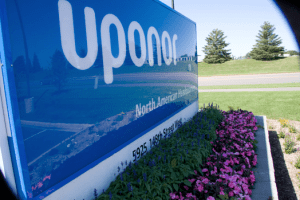
Led by Vice President Doug Fulton, this new function will seek growth opportunities through corporate acquisitions and joint ventures, as well as internal product development. To further enhance Uponor North America’s ability to deliver innovative plumbing and heating solutions to its customers, the company has announced the creation of a new business function. This new business Read more
Led by Vice President Doug Fulton, this new function will seek growth opportunities through corporate acquisitions and joint ventures, as well as internal product development.

Vice President Doug Fulton, will lead new business venture development, for Uponor North America.
To further enhance Uponor North America’s ability to deliver innovative plumbing and heating solutions to its customers, the company has announced the creation of a new business function. This new business function will be led by Vice President Doug Fulton and called New Venture Development.
Reporting directly to President Bill Gray, Fulton will lead the exploration, incubation and integration of new products into Uponor’s existing business offerings, while also forging external partnerships. The overarching goal is to expand the company’s growth opportunities in ways that align with Uponor’s business strategy and customer insights.
Fulton’s responsibilities will encompass numerous areas related to corporate growth and expansion: Business Development (M&A/Partnerships), Business Incubation, Construction Services (including Building Information Management), Codes & Standards, Government & Industry Affairs, Project/Stage-Gate Management, and Uponor Innovation LLC.
As part of his business-incubation work, Fulton will oversee the company’s recently announced partnership with Reno, Nevada-based Pestan North America (PNA) to market and sell PNA’s proprietary PP-RCT pipe and fittings. (Note: PP-RCT stands for polypropylene, random copolymer, with modified crystallinity and temperature resistance.) Currently preparing for a formal launch of the product offering, Uponor will serve as PNA’s exclusive distributor throughout the United States and Canada.
“With the creation of our New Venture Development function, Uponor is doubling down on innovation,” says Gray. “We are emphasizing more than ever our commitment to providing innovative plumbing, heating and fire safety solutions to our customers.”
“The name New Venture Development reflects the way we see the business world evolving in the month and years ahead,” Gray continues. “While Uponor will continue to aggressively pursue direct product innovation internally, we envision an equal, if not greater, role for acquisitions, strategic partnerships and joint ventures, as we broaden our scope and capabilities.”
Most recently serving as Vice President of Product Marketing at Uponor, Fulton joined the company in 2017 as senior director of Corporate Strategy and Segment Marketing. He holds an M.B.A. from Indiana University and a bachelor’s degree in Business Administration from the University of Toledo.
Before joining Uponor, Fulton worked as Director of Marketing at Andersen Corporation, a national manufacturer of windows and patio doors. Prior to that, he was Vice President, Business Development – Midwest, for the Walt Disney Company. Fulton spent the first part of his career in various marketing leadership roles in the consumer products industry.
